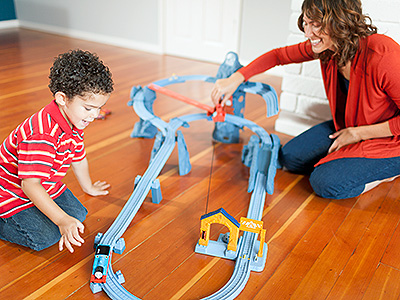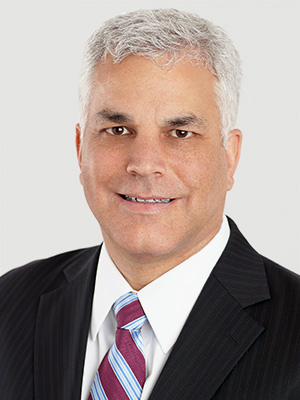ISOfocus meets with David Kosnoff, Vice-President, Product Quality and Regulatory Compliance for Mattel, Inc., to discuss the firm’s commitment to quality and safety policies, its use of standards, and compliance to worldwide product regulatory requirements.
ISOfocus : Mattel recalled 19 million toys from August to September of 2007 – the biggest recall in the company’s history. Many media sources commended Mattel for getting the word out quickly and efficiently. How has Mattel’s safety and quality strategy changed since 2007 ? What has been improved ?
David : Let’s start with what hasn’t changed – our unwavering commitment to product safety and quality. The health, safety and well-being of children are our top priority, and we will meet or exceed legal requirements and industry standards for product quality and safety. We work hard every day to earn the trust of our consumers through our dedication to safety by making products that parents can trust.

toys recalled in 2007
Since its 2007 recall of 19 million toys, Mattel has worked to enhance its product compliance protocols.
Since 2007, we have worked to enhance our product compliance protocols and procedures to ensure the highest safety standards are followed at Mattel. As the toy industry has become much more regulated, particularly with respect to chemicals, we have significantly increased both the capabilities and capacities of our laboratories, investing in new facilities, new equipment, and highly trained staff.
All our laboratories are now accredited to ISO/IEC 17025 for laboratory competence, and we are requiring all factories producing our products to be certified to ISO 9001 for quality management.
You manufacture and sell your products globally, producing some toys in factories of your own as well as using contract factories. With a global operation, how do you ensure the quality and safety of your products throughout the supply chain ?
Mattel uses a number of methods to help ensure the success of its quality management system.
Quality and safety start with the right design. We design our toys to meet standards such as ISO 8124, ASTM F963 and EN 71 on toy safety. We then use a variety of tools to assess and validate these designs.
Fact
Lead – a metal that for years was common in paint and gasoline – can harm a child’s brain, kidneys and other organs. High levels in the blood can cause coma, convulsions and death. Lower levels can reduce intelligence, impair hearing and behaviour and cause other problems.
Source : WHO
We source our products from reputable manufacturers. Our factories, both Mattel-owned and vendors, are certified to ISO 9001. Many are also certified to ISO 14001 and OSHAS 18000. Designs and processes are further validated through our pilot programme, which involves testing to both internal reliability and external safety standards.
Most of our larger factories have built in-house laboratories to facilitate our aggressive quality assurance (QA) and quality control (QC) programmes, testing of raw materials, work in progress, and vetting of finished goods. These laboratories create additional capacity and speed and, to ensure adequate capabilities, Mattel requires them to be certified to ISO/IEC 17025. All products are certified to meet applicable requirements and standards. Only then can full production begin.
We rely on a combination of our factories’ quality management systems and the expertise of our own team of engineers to ensure that initial levels of quality are maintained throughout the production run. In addition to the daily QA and QC activities, we periodically pull samples from production and re-qualify our products so that we have a high degree of assurance that our toys continue to meet all our requirements.
From children to their grandparents, you have a wide range of consumers. How do International Standards facilitate Mattel’s relationship with customers and support the company’s product recall strategy ?

The safety of our consumers is Mattel’s top priority. As a company, we have designed and implemented a comprehensive infrastructure to ensure the safety of our products in order to produce fun and safe toys. International Standards provide the framework for Mattel’s rigorous safety and quality programme.
Standards are incorporated at all phases of product development : from the inception of a concept and design (which integrates how children imagine, create and improvise when they play and how a toy can encourage such imagination or elicit play patterns in ways standards may not anticipate), through material selection and manufacturing, to store shelves, and finally the family playroom.
ISO standards are the building blocks of Mattel’s global programme for safety and quality and provide an important tool for building relationships with, and loyalty among, our customers, whatever their age.
Toys are essentially made of plastic, which has not always had a “ green ” image. How has sustainable development been integrated into the company’s strategy ?
As the largest toy manufacturer in the world, Mattel views sustainability as an investment in the future, for the current and upcoming generations upon which our business depends. In the early days – well before “ sustainability ” and “ lean manufacturing ” became common business terms – Mattel’s efforts included a host of programmes, projects and strategies that addressed environmental concerns.
of recalls across the world were toys
In recent years, we have dedicated tremendous resources to understanding the impacts of our business and positioning our company to address issues and opportunities in measurable ways. We have defined measurable goals and targets that align with our business and drive our global sustainability efforts : reducing the impact of our products and packaging, decreasing our carbon emissions and promoting a culture of sustainable growth.
Whether we are reducing the carbon footprint of our supply chain, exploring the use of innovative new materials, or encouraging our workforce to promote a sustainable future, Mattel continues to develop the most playful products while taking into consideration our impact on the planet and its people.
Mattel participates actively in ISO technical committees, especially ISO/TC 181, Safety and toys. What progress would you like to see in international standardization in general and in toy standards in particular ?

We live, work and play in a global economy. The safety of children and families everywhere is important to Mattel. We believe that toys, no matter where they are made or by whom, must meet International Standards for safety such as those laid out in ISO 8124, Safety and toys.
Mattel’s emphasis on safety drives our commitment towards active participation in the standards development work of ISO/TC 181 and other standards committees. We encourage common standards for all toys throughout the world, and as a good corporate citizen, we have always made it a priority to collaborate and share our knowledge and experience on product safety.
One of the challenges of the global economy, however, is that not all markets adopt or recognize ISO standards. Sometimes a country or region establishes its own requirements that are not consistent or concurrent with existing standards, making selling in the various markets difficult and costly – and potentially threatening consumer protection if the standards that are adopted do not meet international norms.
Mattel encourages countries throughout the world to move towards unified standards for toy safety that incorporate the latest intelligence and technology and help to ensure consumer protection across borders. The safety of children, no matter where they live, is a goal we all share.
About Mattel
Mattel is the worldwide leader in the design, manufacture and marketing of toys and family products with more than USD 7 billion in sales. With worldwide headquarters in El Segundo, California, Mattel employs approximately 30 000 people in 40 countries and territories and sells products in more than 150 countries. In 2013, for the sixth year running, Mattel was voted one of the “100 Best Companies to Work For” by Fortune Magazine. Mattel is also ranked among Corporate Responsibility Magazine’s “100 Best Corporate Citizens”.

David Kosnoff is Vice-President, Product Quality and Regulatory Compliance for Mattel, Inc.
He is responsible for the quality and safety of all new Mattel products, development of new toy safety standards, and compliance to worldwide product regulatory requirements.

